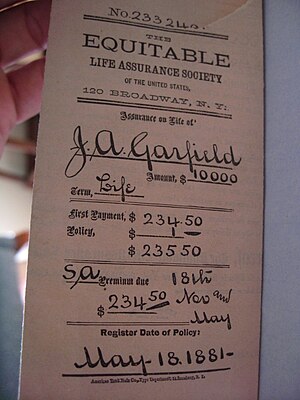- Up at 5 two days in a row. Sleepy. #
- May your…year be filled w/ magic and dreams and good madness. I hope you…kiss someone who thinks you’re wonderful. @neilhimself #
- Woo! First all-cash grocery trip ever. Felt neat. #
- I accidentally took a 3 hour nap yesterday, so I had a hard time sleeping. 5am is difficult. #
- Wee! Got included in the Carnival of Personal Finance, again. http://su.pr/2AKnDB #
- Son’s wrestling season starts in two days. My next 3 months just got hectic. #
- RT @Moneymonk: A real emergency is something that threatens your survival, not just your desire to be comfortable -David Bach # [Read more…] about Twitter Weekly Updates for 2010-01-09
Megan Fox’s Little One: The First Year Costs of Having a Baby

If you can’t get enough of Megan Fox like everybody else, you probably already know that paparazzi has spotted her with a new and conspicuous belly bump. The steamy star already gave birth to a beautiful baby boy named Noah in 2012, but she also expressed a desire to have more children in the future. We just didn’t think that it would happen this soon. Luckily, Megan is blessed with celebrity wealth, so funding another newborn shouldn’t be too much of a problem. Unfortunately, most new mothers aren’t celebs. If you are a new or expecting mother, prepare yourself for your bundle of joy by familiarizing yourself with first year expenses and ways to save money.
What are the first year costs of caring for a baby?
Babies are expensive. How expensive, you ask? Well, that depends on your standard of living. It’s a pretty good bet that Megan Fox will dish out more dough on her newborn than most people have the ability to. Baby Gucci just isn’t on the shopping list for mothers who live from paycheck to paycheck. However, the essentials are already expensive enough to make most moms have a panic attack. A 2010 USDA report suggests that a typical American family spends about $12,000 during the first year on a baby. These days, that number is probably closer to $15,000.
What will most of the money go towards?
There are two major items that are an absolute must for a baby: formula/baby food and diapers. Expect to shell out about $50 per week on these things alone. That’s nearly $2,500 per year. Another big portion of your baby expenses will comprise of pricier one-time purchases including a baby stroller, crib, car seat, etc. The rest of the funds will likely go to baby clothes, childcare, and medical expenses.
How can I save money?
There are countless ways to cut the costs of having a baby, but you need to get creative to maximize your savings. If you want to have a fatter wallet at the end of that first year, here are some of the easiest and most effective ways to do so.
Take free samples during the initial hospital stay
Many baby product manufacturers supply maternity wards with free samples, but nurses sometimes forget to hand them out. Remember to ask about these samples after giving birth, and bring home as much as they will allow. You can snag useful items like: diapers, diaper bags, baby lotion, swaddling cloths, disposable bottle nipples, alcohol swabs, a thermometer, a nasal aspirator and more.
Breastfeed
A mother’s milk is the healthiest food option for a growing baby because it contains nutrients not found in many baby formulas. Since formula can be very expensive, you will save a ton of money and give your child the best nutrition possible by breastfeeding.
Get oversized baby clothes or use hand-me-downs
Babies grow at an amazingly fast rate, so always buy clothes of a bigger size. If you have close friends or family members who’ve already had a child, ask if you can use their old baby clothes.
Buy diapers, formula, and other commonly used supplies in bulk
Like with most consumer goods, you will pay less if you buy more. Stock up on the essentials early on if you don’t want to waste your money in the long run.
Related articles
What Is Your Binary Options Strategy?
 When you are just entering the world of binary options trading or investing, you may be on the receiving end of a lot of advice. It is not uncommon to hear people tell you to implement different gambling strategies because binary options are based on chance more than anything else. You will also hear a lot of advice from those who say there are many good ways to develop an effective strategy using indicators and market signals. Some will insist that with proper analysis of market data, a solid strategy can be developed too.
When you are just entering the world of binary options trading or investing, you may be on the receiving end of a lot of advice. It is not uncommon to hear people tell you to implement different gambling strategies because binary options are based on chance more than anything else. You will also hear a lot of advice from those who say there are many good ways to develop an effective strategy using indicators and market signals. Some will insist that with proper analysis of market data, a solid strategy can be developed too.
Are they all correct? Interestingly enough, the answer is yes. The reason for this is simple, and as one expert writes, “there is no such thing as a perfect strategy for every trader. There is only a best strategy for each individual trader.” Thus, your strategy has to be shaped around a few things:
- Your willingness and ability to follow your chosen strategy.
- Your personality. For instance, are you restless if you are taking the safe route or a higher risk strategy?
- Your budget and goals,
Identifying the answers to these questions is the first step to formulating a strategy. You should also understand that the winning percentage of most strategies will be somewhat constant, but the total number of successful trades varies on an individual basis and is based entirely on the strategies used.
For instance, some investors want a high percentage of winning trades and are more comfortable with risk averse trading. Others are ready to take more risk and are entirely comfortable winning fewer trades if the returns on winning trades are dramatically higher. This enables them to implement higher risk trades. The interesting thing about strategies and the kinds of trades they generate is that they are all built from the same data.
The Data of Strategy
For example, almost all strategies will look at issues like market trends, trading trends, highs and lows, reversals, and various kinds of indicators. The reason that high and low trends pay off in strategy development is simple: binary options trading applies to whether or not an asset rises above a strike price or doesn’t. It is the proverbial “yes or no” part of the proposition and analysis for either outcome pays off.
As an example, a lot of risk-averse investors will look for breakouts. They use these for trend line investing, which can be as brief as sixty seconds to a day, but can be used to coordinate investing in the direction of a short trend. Although this seems complex, it really is not. The key is that analysis cannot be broad and across all available markets. Instead, focused analysis on a specific area will allow even a novice investor to analyze for a breakout and then invest in binary options accordingly.
Just being able to detect a reversal or a downward trend over the course of a day can yield a very rewarding investment. The key is to understand your strategy based on your budget, personality, and your ability to stick with the strategy, even if it does not yield immediate success. When you do this, and use the right tools for analysis, you can create an effective strategy that brings you closer to your goals.
This is a guest post.
Insane Incentives
Spring is in the air.

At my son’s school, that means it’s time for the Minnesota Comprehensive Assessment tests. These are the standardized tests created by the No Child Left Behind Act that determine if a school is doing its job in educating children. If too many kids have lousy scores, the school gets put on the “Adequate Yearly Progress” list and will eventually get penalized financially.
That creates a perverted incentive in the school system. The main metric for a publicly-funded school’s success in Minnesota is the MCA. If a school can churn out illiterate trench-diggers, they will get increased funding as long as the test scores are good.
For a full two weeks before this test, the school effectively shut down the education program to prepare for the MCA test. That’s two weeks of studying for a set of standardized tests that focus on reading, writing, and arithmetic. I’m a fan of schools prioritizing the three Rs over other subjects, but that’s not what they did.
They spent two weeks studying testing strategies, not the material contained in the test.
In science class, they covered essential scientific elements like “Answer all of the easy questions first, so you can go back and spend time on the hard ones later.”
Spanish class covered verb usage similar to “When the time is almost out on the test, answer ‘C’ for all of the hard questions you have left, que?”
They weren’t being educated, they were learning the most effective way to solve a test to gain funding for next year.
For 2 weeks.
That’s not reading practice, or reviewing the parts of speech, or covering the necessary math skills. It’s “This is a #2 pencil. This is a circle. Practice until lunch.”
Is this really what NCLB was trying to accomplish? Standardized tests to measure school proficiency should be a surprise. Let’s randomly send in test proctors to take over a school for a day and see what the kids have actually learned.
Protection for your Loved Ones

This is a guest post.
Life cover insurance acts as a safety net to pay for a family’s expenses should a wage earner become critically ill or die prematurely. Life cover includes life insurance as well as disability, critical illness, mortgage and income protection insurance policies.
Importance of life cover insurance
In most families, at least one adult is a wage earner and uses their income to pay for necessities such as food, clothing and rent or mortgage. If the wage earner becomes disabled, too ill to work, or dies, life cover insurance can pay for these expenses.
Stay-at-home parents provide valuable, though unpaid, services to the family. Without that person, the family would have to pay for childcare, household upkeep, errand running, and every other chore the stay-at-home parent did. If the stay-at-home parent has life insurance, these expenses can be covered.
Life cover insurance can pay off mortgages and education loans.
Live cover insurance policies will pay funeral costs, which can be substantial.
Family owned businesses can be insured and protected if the owner dies.
Objections
Life cover insurance is too expensive.
Insurance companies have plans to suit every budget and life circumstance. While young and healthy adults will generally receive the most affordable policies, older adults have plenty of reasonably priced options as well.
Disability or severe illness is unlikely.
Actually, 32% of men and 25% of women, ages 40 to 70, will experience a critical illness or disability. http://www.healthinsuranceguide.co.uk/statistics_mainbody.asp
Discussing disability or death is awkward and uncomfortable.
Agreed, but avoiding the topic puts loved ones into economic jeopardy. Without the wage earner’s life cover, a family could lose their home and have to lower their standard of living.
Variety of life cover insurances
Life Insurance
Term insurance is a protection policy, paid for during a specific time period (term), and is active during that time only. Permanent, whole, variable, universal and universal variable life insurance policies all are investment policies. They combine a death benefit (the amount paid out when the insured person dies) with an investment account. Licensed and experienced life insurance agents can help individuals make the best choice for their life situation.
Critical Illness/Disability Insurance
This type of insurance pays for living expenses if a person is diagnosed with a serious illness or disabled and can no longer work.
Mortgage Insurance
This is paid when the mortgage owner dies. This could help prevent the surviving family from having to sell the home.
The time to buy life cover insurance is now!
A 2010 survey (http://www.prnewswire.com/news-releases/ownership-of-individual-life-insurance-falls-to-50-year-low-limra-reports-101789323.html) stated that individual life insurance ownership was at a 50 year low in the United States. An estimated 35 million (30% of households) Americans do not have life insurance, and 11 million of these households have children under 18. Already living paycheck to paycheck, any debilitating injury or death of a wage earning adult could spell financial disaster to the family. Buying life cover insurance is a vital part of caring for loved ones. Just as a wage earner provides a home, food and daily necessities for their family, life cover insurance can take over and provide for the family if the wage earner unable to do so.
Financial Pet Peeve: Fees To Receive Paper Bank Statements
Today’s post is written by Tim of Faith and Finance. It was written for a blog swap run by the Yakezie personal finance blog network to answer the question “What is your biggest financial pet peeve?“
Chances are, you’ve probably received a few notices from your bank or investment company about receiving e-statements. I’m all for getting less mail, and having online access to my statements is a really nice feature. In fact, most of my statements are online now.
So why is it a pet peeve if I LIKE viewing statements online? Here’s why: If you don’t get the online version of your statements, many places will charge you for the paper statement. My bank (which will go unnamed) pulled this very move. If you want to receive paper statements you had to pay a few dollars each year for the ‘service.’ Now I understand that printing statements costs money, but what bothers me the most is that the bank continues to send junk mail even though I opted in to the e-statements.
It seems a little impolite to say “You have to stop using paper…but we’ll keep sending you stuff you don’t want in the mail.” Each time they send me something in the mail promoting a new product or those goofy cash advance checks, I think about how much money they’re NOT saving.
***Ok ok, I’ll stop ranting. That’s what happens when you’re challenged to write about a pet peeve…you get a little excited. 🙂
Solutions to the problem
I’m a firm believer that if you’re going to complain about something, you should be willing to suggest alternatives, so here’s what I’d do differently if I were the banks.
- 1. Don’t punish for paper statements, incentivize for online statements
If you want to connect with people online and save money in the long run, provide an incentive to make the shift to online statements. Money and interest rates talk, so maybe provide $5 plus access to a higher paying certificate only available for our online banking members.
- 2. Consolidate the message.
If people want to get paper statements still, don’t charge them – instead, use the statement envelope to promote your products. The envelope is already paid for, so why not use it for marketing purposes. Now I know they’ll say, “people don’t read statement stuffers.” To that I’d say, “what makes you think they’d read a dedicated mailer then?”
Those are my two cents. Has anyone thought the same thing? How do you feel about paper statements vs. online statements?
[Jason’s note: There is a fee that irritates me a lot more than paying to get a paper statement. I hate “online access” fees. Those are the fee where you get charged for other people doing less. They are usually called convenience fees or, in the case of government, technology fees.]







